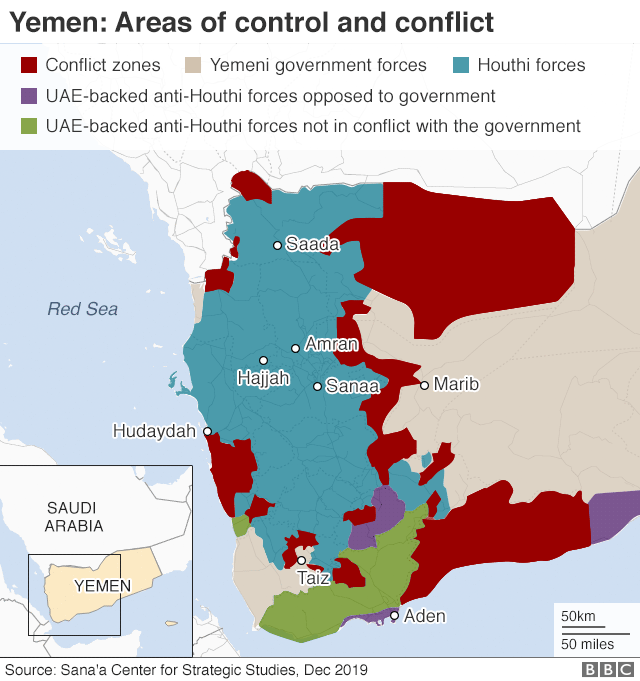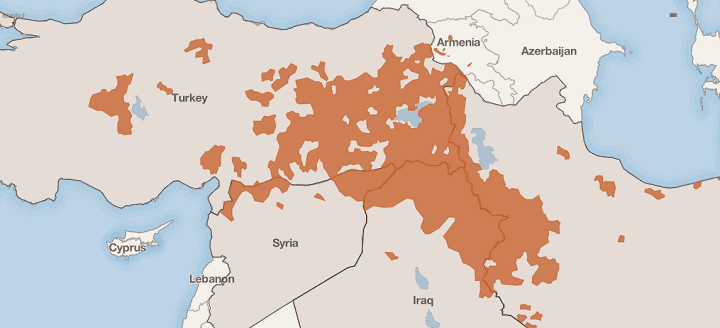Table of Contents
Introduction
Yemen is a country located in the Middle East bordering the Arabian Sea, Gulf of Aden, and the Red Sea. Yemen has a strategic location on the Bab el-Mandeb, the strait linking the Red Sea and the Gulf of Aden, one of world’s most active shipping lanes.
Yemen has an area of 527,970 square kilometres (203,850 square miles) and its coastline stretches for about 2,000 kilometres (1,200 miles)
Yemen is mostly mountainous and generally arid, though there are broad patches with sufficient precipitation to make agriculture successful.
The people speak various dialects of Arabic and are mostly Muslims.
Yemen is one of the poorest countries in the Arab region and is ranked 154 on the Human Development Index (HDI).
At 2.9%, the country has one of the highest population growth rates globally, with the population expected to double in 23 years to around 40 million.
The history, culture, economy, and population of Yemen have all been influenced by the country’s strategic location at the southern entrance of the Red Sea—a crossroads of both ancient and modern trade and communications routes.
Yemen is one of the oldest centers of civilization in the Near East. Its capital and largest city is Sana’a. Yemen’s territory includes more than 200 islands, the largest of which is Socotra, about 354 km (220 mi) to the south of mainland Yemen.
It is the only state in the Arabian Peninsula to have a purely republican form of government.
Yemen was the first country in the Arabian Peninsula to grant women the right to vote.
Yemen Crisis
After the Ottoman Empire and then under the British occupation of Southern Yemen, the country was divided into North Yemen (Yemen Arab Republic) and South Yemen (People’s Democratic Republic of Yemen).
Yemeni unification took place on 22 May 1990 and the present Republic of Yemen came into being in May 1990, when the North Yemen with South Yemen.
Sanaa, former capital of North Yemen became the political capital of the country, while Aden, formerly the capital of South Yemen, functioned as the economic center.
The two components of Yemen underwent strikingly different histories: whereas North Yemen never experienced any period of colonial administration at the hands of a European power, South Yemen was a part of the British Empire from 1839 to 1967.
An Arab Spring uprising forced longtime authoritarian president, Ali Abdullah Saleh, to hand over power to his deputy, Abdrabbuh Mansour Hadi, in 2011.
The Houthi movement (known formally as Ansar Allah), which champions Yemen’s Zaidi Shia Muslim minority and fought a series of rebellions against Saleh during the previous decade, took advantage of the new president’s weakness by taking control of their northern heartland of Saada province and neighbouring areas.
Disillusioned with the transition, many ordinary Yemenis – including Sunnis – supported the Houthis, and in late 2014 and early 2015 the rebels gradually took over the capital Sanaa.
The Houthis went on to take the capital Sanaa, forcing Mr Hadi into exile abroad in March 2015.
The conflict escalated dramatically in March 2015, when Saudi Arabia and eight other mostly Sunni Arab states – backed by the US, UK, and France – began air strikes against the Houthis, with the declared aim of restoring Mr Hadi’s government.
The Saudi-led coalition feared that continued success of the Houthis would give their rival regional power and Shia-majority state, Iran, a foothold in Yemen, Saudi Arabia’s southern neighbour. Saudi Arabia says Iran is backing the Houthis with weapons and logistical support.
The alliance between the Houthis and Ali Abdullah Saleh also collapsed in November 2017 following deadly clashes over control of Sanaa’s biggest mosque. Houthi fighters launched an operation to take full control of the capital and Saleh was killed.
In June 2018, the coalition attempted to break the deadlock on the battlefield by launching a major offensive to capture from the Houthis the Red Sea city of Hudaydah, whose port is the principal lifeline for almost two thirds of Yemen’s population.
Mr Hadi’s government has established a temporary home in Aden, but it struggles to provide basic services and security and the president continues to be based in Saudi Arabia.
The Houthis have not been dislodged from Sanaa and north-western Yemen. They have been able to maintain a siege of the third city of Taiz and to launch regular ballistic missile and drone attacks on Saudi Arabia.
Militants from al-Qaeda in the Arabian Peninsula (AQAP) and the local affiliate of the rival Islamic State group (IS) have taken advantage of the chaos by seizing territory in the south and carrying out deadly attacks, notably in Aden.
In August 2019, infighting erupted in the south between Saudi-backed government forces and an ostensibly allied southern separatist movement supported by the United Arab Emirates, the Southern Transitional Council (STC).
Forces loyal to the STC, which accused Mr Hadi of mismanagement and links to Islamists, seized control of Aden and refused to allow the cabinet to return until Saudi Arabia brokered a power-sharing deal that November.
The UN hoped the agreement would clear the way for a political settlement to end the civil war, but in January 2020 there was a sudden escalation in hostilities between the Houthis and coalition-led forces, with fighting on several front lines, missile strikes and air raids.
Key Players
Republic of Yemen Government (ROYG) – The internationally recognized government has been led by Abdu Rabbu Mansour Hadi since 2012, when he was elected as caretaker president to replace President Ali Abdullah Saleh, who had been in power for 33 years. The Hadi government has been backed by the Saudi-led coalition since 2015.
Houthi Forces (Ansar Allah) – The Houthi movement is a predominantly Zaydi Shiite revivalist political and insurgent movement formed in the northern Yemeni governorate of Sa’dah under the leadership of members of the Houthi family. The group was allied with former President Ali Abdullah Saleh until 2017.
Al Qaeda in the Arabian Peninsula (AQAP) – AQAP has operated in Yemen since 2009 as a successor to previously active AQ members in the country, and since has been most active in Yemen’s southern governorates. AQAP enjoys support from some inland tribes and has taken and held territory along Yemen’s southern coast with varying degrees of success since 2015. AQAP has attempted to carry out attacks in the United States and Europe.
Southern Transitional Council (STC) – A southern separatist force backed by the United Arab Emirates since the spring of 2017, the STC isled by Yemeni General Aidarous al Zubaidi, former governor of Aden. The STC and Hadi government have been at odds over the inclusion of Yemen’s main Sunni Islamist party (Al Islah) in Hadi’s government. In August 2019, the STC took control of Aden, Yemen’s interim capital.

Yemen’s Humanitarian Crisis
United Nations has described Yemen situation as the world’s worst humanitarian crisis.
The country is divided and the stalemate has produced an unrelenting humanitarian crisis, with at least 8.4 million people at risk of starvation and 22.2 million people – 75% of the population – in need of humanitarian assistance, according to the UN. Severe acute malnutrition is threatening the lives of almost 400,000 children under the age of five.
